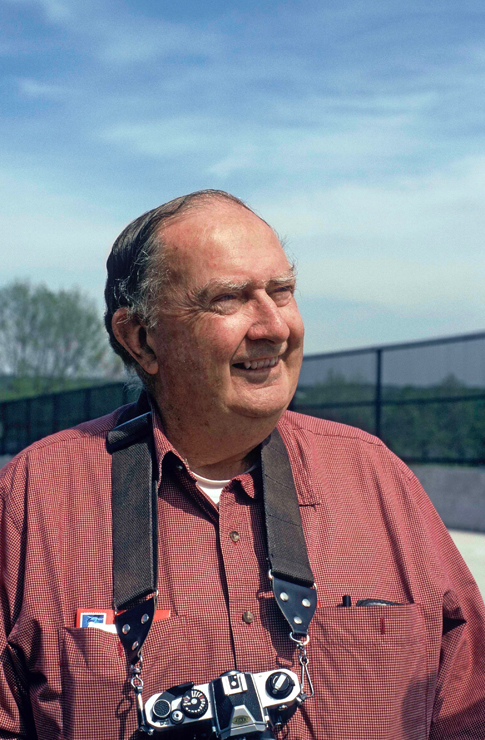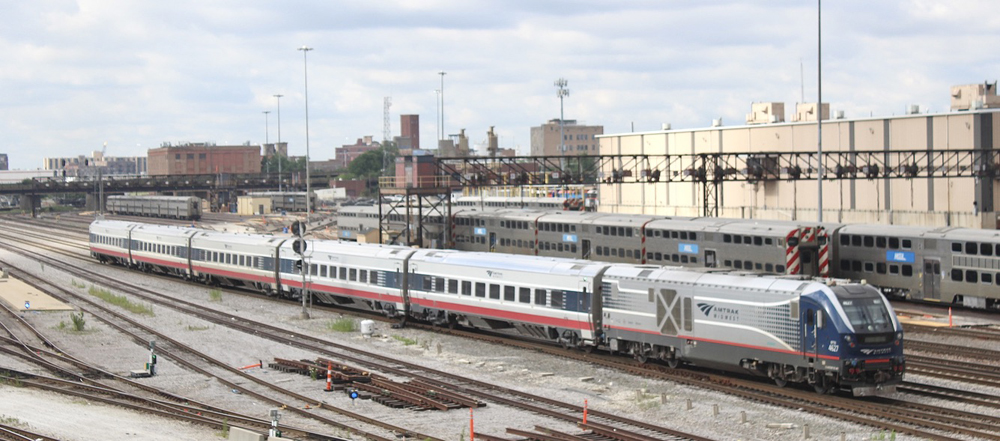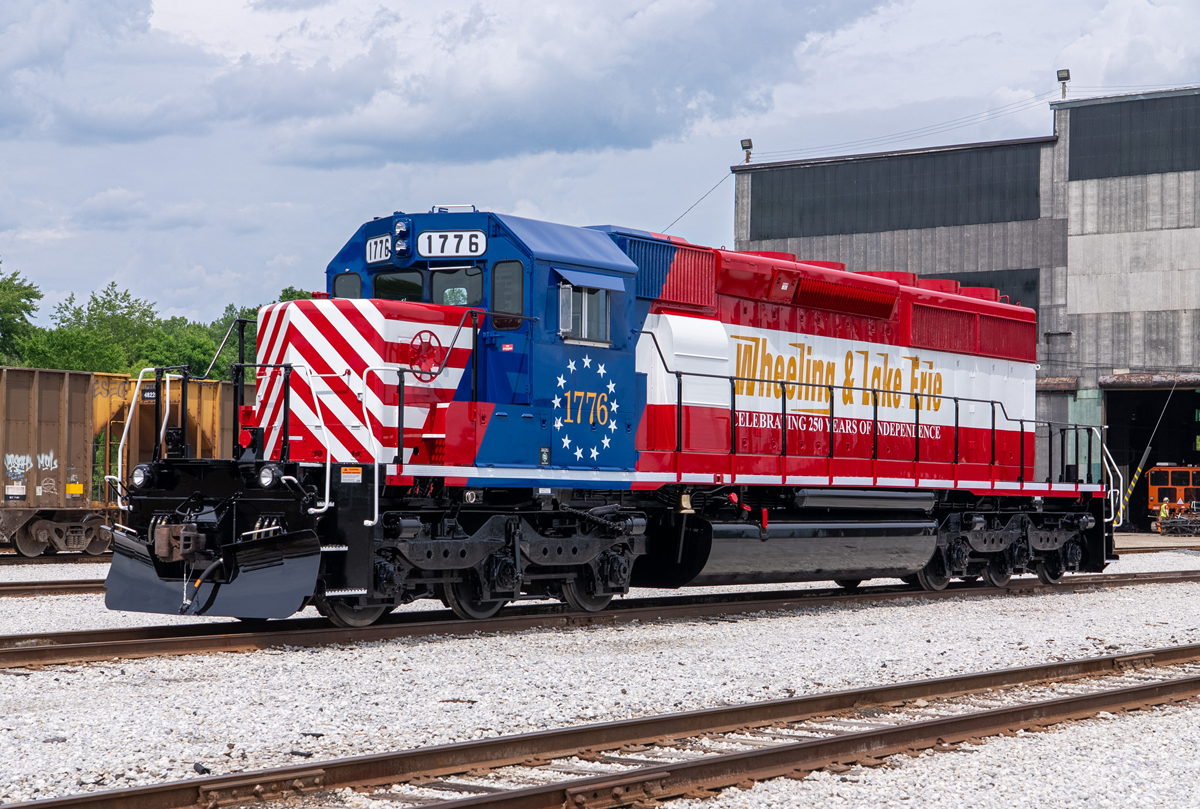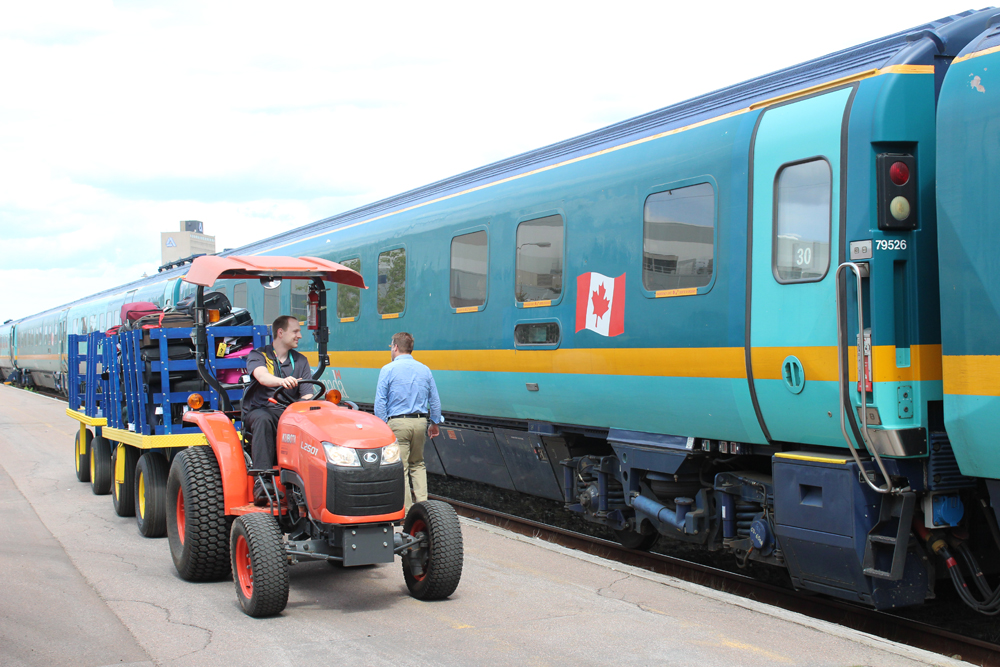TROY, N.Y. – Of all the pioneers who revolutionized railroad photography in the postwar decades, few equal the status of Jim Shaughnessy, one of the deans of the field, especially as measured by his powerful images from the steam-to-diesel era of the 1950s and ’60s.
Shaughnessy died Tuesday, Aug. 7, after a long illness. He was 84.
Generally considered part of railroad photography’s “big three” – the others being Philip R. Hastings and Richard Steinheimer – Shaughnessy was a fearless artist who got in and around railroading as few others did. He was an important figure in the shift away from simple train pictures toward depictions of the entire railroad environment.
“Jim sought to contextualize the engines and trains he loved into a broader framework that spoke less about hardware and more about their role in everyday life,” says author and photographer Jeff Brouws, who wrote a lengthy profile of Shaughnessy for the lavish hardcover retrospective The Call of Trains (W.W. Norton, 2008). “Jim was a pioneer, a door-opener. His widespread acclaim deservedly conferred upon him the title of Master Photographer.”
Shaughnessy was as prodigious as he was creative. His collection includes perhaps 100,000 negatives, with thousands of images published in books and magazines. Numerous prints have made it into fine-art collections. His photos also had 13 appearances on the cover of Trains, more than almost any other photographer.
Jim Shaughnessy was born in Troy on November 24, 1933, to a religious Irish-Catholic family. His father, James, was for many years the superintendent of grounds and buildings at Saint Joseph’s Seminary overlooking the city. His mother, Helen, was a secretary at the W. & L. E. Gurley Co., which manufactured precision instruments.
Both parents were attentive and encouraging, and clearly imparted in their son a sense of the value of practical work, very much in keeping with the industrial city of Troy itself, a frequent subject for Shaughnessy’s camera.
There was another key family member: his uncle, Cornelius “Con” Shaughnessy, a one-time valve setter on steam locomotives for the Delaware & Hudson Railroad. When Jim was growing up, Con was a boiler inspector for the Hartford Insurance Co., a job that allowed him to take his nephew along for inspections, almost like an apprenticeship in steam.
Shaughnessy began his photographic career as a youth, focusing on Troy. The city was an ideal classroom, blessed with a variety of railroads and a compelling geography, tucked as it is into a narrow stretch of the Hudson River Valley north of Albany. The young photographer became a regular at Troy Union Station, a Beaux Arts edifice in the middle of town serving trains of New York Central, Boston & Maine, and Delaware & Hudson.
One of Shaughnessy’s favorite railroads was the D&H, which had its headquarters nearby in Albany. Many years later, his credentials fully established, Shaughnessy would write the definitive corporate history Delaware & Hudson for publisher Howell-North Books.
After briefly attended Champlain College, Shaughnessy moved on to Troy’s prestigious Rensselaer Polytechnic Institute, to prepare for a career as a professional engineer. At RPI, he joined the institute’s venerable model railroad club, where he became friends with another future railroad photographer and author, William D. Middleton.
As he moved beyond his teenage years, Shaughnessy began to take his camera further afield, heading mostly north and east, where he found rich hunting grounds in the northern reaches of New York, as well as Vermont, New Hampshire, Massachusetts, Quebec, and the Maritime Provinces.
Shaughnessy was drawn to the major carriers of the region – B&M, Central Vermont, Canadian National and Canadian Pacific – but he also photographed smaller, iconic entities such as the St. Johnsbury & Lake Champlain and Saratoga & Schuylerville. His first photograph in Trains appeared in the May 1952 issue, a view of the Mount Washington Cog Railway near Bretton Woods, N.H., and credited “J.J. Shaughnessy.”
He also fell under the spell of the Rutland Railroad, and told the entire story of the railroad in his critically acclaimed book The Rutland Road, first published by Howell-North Books in 1964, with a new edition from Syracuse University Press in 1997.
Gradually Shaughnessy took his camera west to southern Ontario, Michigan, Ohio, and Illinois. He later said he made eight trips with his friend Phil Hastings, with whom his work is often compared.
Shaughnessy’s reputation grew considerably, mostly in the pages of Trains. The editors knew that, in Shaughnessy, they could expect images that were beautifully composed and technically flawless, evidence of his tremendous skill in the darkroom. He was a master of the action photograph, taken in all manner of inclement weather, but he was also made frequent night photographs and depictions of railroaders at work.
For longtime Trains Editor David P. Morgan, Shaughnessy was invaluable for another reason: his embrace of the diesel. Morgan’s great challenge in the 1950s was to sustain the appeal of the magazine despite the loss of steam, and Shaughnessy was an ideal foil. “Yes, the diesel was more predictable,” Shaughnessy said, “and it quietly went about its business. It presented a different kind of visual challenge. But this was a transition era. It would only happen once. I was glad to be there for it.”
The Railway & Locomotive Historical Society in 1987 honored Shaughnessy with its Fred A. and Jane R. Stindt Photography Award. In addition to his 2008 book The Call of Trains, his pictures were featured in another hardcover portfolio, Jim Shaughnessy: Essential Witness, published in 2017 by Thames & Hudson.
Shaughnessy’s love of railroading never flagged, and his work continued to attract new fans into the 21st century. In 2007, Classic Trains magazine launched “The Shaughnessy Files,” a regular feature showcasing not only some of Shaughnessy’s best images – some for the first time – but also his memories of individual trips and subjects.
Apart from railroad photography, Shaughnessy had a long career as a licensed professional engineer. He taught civil engineering for many years and retired in 1995 as the director of environmental health for Rensselaer County. He is survived by his wife, Carol Shaughnessy, by a son, James, and two grandchildren.
A wake for Jim Shaughnessy is scheduled for 4 to 7 p.m. Aug. 10, at the McLoughlin and Mason Funeral Home in Troy, followed by a funeral mass Saturday at Our Lady of Victory Church in Troy. Burial will be Troy’s Oakwood Cemetery.















Grew up just north of Troy & have always liked his work.Liked how he covered the NYC,D & H & other are lines into Vermont
I had known about Jim and admired his work for years but first met him when he showed up in my CV office in St. Albans one day in 1991 on his way back home from a photo event of some kind and asked if I had time to look at a few of his photos. Did I ever!! We spent a wonderful couple of hours and he left minus a bunch of his classic CV works. We corresponded on and off and met a few times after that and some ten years later when I was involved in the creation of the Center for RR Photography & Art and starting its collection I contacted Jim to see if he’d contribute. Nothwitstanding that he’d never heard of the center or it’s mission until then he generously contributed a half dozen or so prints. Not only was he one of the all time best railroad photographers and a role model in that regard but the same goes for his generosity in sharing his work,and expertise. RIP.
It is truly a sad day for the Railfan community to lose such a wonderful artist and photographer, for some of his work is truly art. I only wish that some of today’s young photographers would be graced to have the variety of subjects and locales that Jim had in his days.
Good luck and Godspeed to you Jim as you meet with the other greats of your era in that great darkroom in the sky. Oh the stories that will be swapped.
For a long time, I have had a philosophy of “shoot what you see, where you are.” Over the years, I came to appreciate Jim Shaughnessy’s work in that vein. His efforts on roads like the D&H, B&M, Rutland, etc, in his own back yard are nothing short of inspiring, especially since they are long gone as most of us older folks(I’m just shy of 60) remember them-and I don’t remember the Rutland at all. I have several books of his work, which I enjoy immensely. Jim was born in 1933, and saw the most significant changes in the industry since its inception, and was able to capture a lot of it; more importantly, he had the presence of mind to do so, shooting diesels when a lot of photographers turned their backs. I find it staggering to think of all the things he saw and photographed in his time. I am grateful he did so.
We have lost one of the great ones. RIP.
like Kratville and Howard Fogg he will be remembered
I never had the privilege to meet or actually know Mr. Shaughnessy but; I have been a fan of his work most of my life. His photographic skill had a way of breathing life into a photo and I always found his pictures to be of interest even if the subject wasn’t one I was particularly enamored of.
His death is a loss to the community of rail enthusiasts and historians.
My condolences to Jim’s family and friends.
Ed Lewis and I set Jim up with many bucolic scenes when he visited us on the Lamoille Valley (SJ&LC) in Vermont. I always accused him of carrying a “blow -up Holstein” in the trunk of his car. He was very gracious.
Rest in peace Jim. One of my own wishes is that Jim would do a history of the Central Vermont. We shall miss him.
His photographic legacy is tremendous, and thankfully he was willing to share it in the many books and magazines where it has appeared. An icon has passed.
Doug Minerd:
Jim was a good friend to our family back in the day and was unfailingly kind and supportive when I was just a kid, a fledgling rail photographer. He used to come and stay with our family up on Lake Champlain back when there ALCO PA’s to chase on the Delaware & Hudson over on the red rock cliffs near Willsboro NY. I well remember climbing over to the North side of Willsboro Tunnel, Jim with his trusty hatchet in hand, efficiently dispatching a sapling that was in his way as he lined up his shot from the top of the tunnel.
When the Southbound Laurentian finally appeared, we each took a picture looking North and to this day I reference mine against his; a master and a young protege each of whom developed and processed their own negatives and prints and yet his was clearly magic.
His humor was endless. He loved to chomp a cigar and float in an inner tube on the lake, drink in hand, chattering endlessly about trains, people and life. One evening, retiring to bed in our cabin where the walls of each room didn’t reach all the way to the ceiling, he closed the door, turned off the light, waited a beat (his timing was perfect) and said: “I feel like I didn’t go anywhere!” We all laughed, each from our own beds and quickly fell to sleep; after all there were PA’s and RS-3’s to chase in the morning.
On one occasion we stood down below the railroad bridge that crossed the Bouquet River near town and when the train appeared I eagerly snapped away (as fast as you could on an old Argus C3 35mm rangefinder) but Jim just stood there and watched. Confused, I asked him why he had not taken a picture and he said simply: “The light was wrong”. Lighting. The secret sauce. The stuff of life in photography.
When you look at Jim’s work you find innovative yet simple ideas of composition and light, technical expertise and wit all combined into an image that evokes a sense of time and space that simply transcends the medium.
Let’s face it. The man knew how to tell a story. – Doug Minerd Charlottesville, VA
One of the things I liked best about Jim’s work was how he incorporated the human element into so much of his work, a trait that he shared with his friend Philip Hastings. I shiver when I see some of Jim’s images of winter railroading in Canada and New England.
Aside from being a great photographer, Jim was a warm and generous person. Even though he was one of the most widely published lensmen of his generation, he seemed delighted to share his material with me each time I was working on a new book project. I’ll always be grateful to have had the opportunity to know him.
Great Man — Both in rail photography and as a author. Will long be remembered every time we see his great photos. Now he belongs to the ages he documented from steam to diesel.
“Eternal rest grant unto him oh Lord, and let perpetual light shine upon him.”
We’ve lost another legend. Rest in peace Jim!
A huge loss to railroad iconography. Condolences to his family. Don’t forget about O. Winston Link. His images are stunning and a couple hang on my walls.
Jim was a valued and respected member of The D&H Family. Jim and I have been friends since my first year at RPI in 1959. The day his book “The D&H,” arrived from the printer in 1967, he took his list of recipients who worked on The D&H north of Albany and placed a book for each of us in the care of the baggageman on Train 35, The Laurentian. I received mine, autographed to me, in front of my Track Supervisor’s Office at Plattsburgh Station. Then I took the box of books for the few who were not there, and made the proper distribution with my D&H hi-rail truck. That was Company Business.
And Kudos to Kevin Keefe for an insightful obit. Would it not be wonderful to overhear conversations about photo picks between James Shaughnessy and DPM?
Professional to the nth degree, and then some. He had his own style and his own signature motifs. And by all accounts one great guy. Rest in peace, in the name of the Father, The Son and the Holy Spirit.